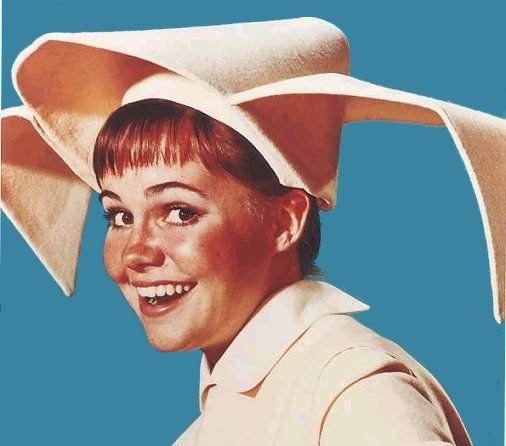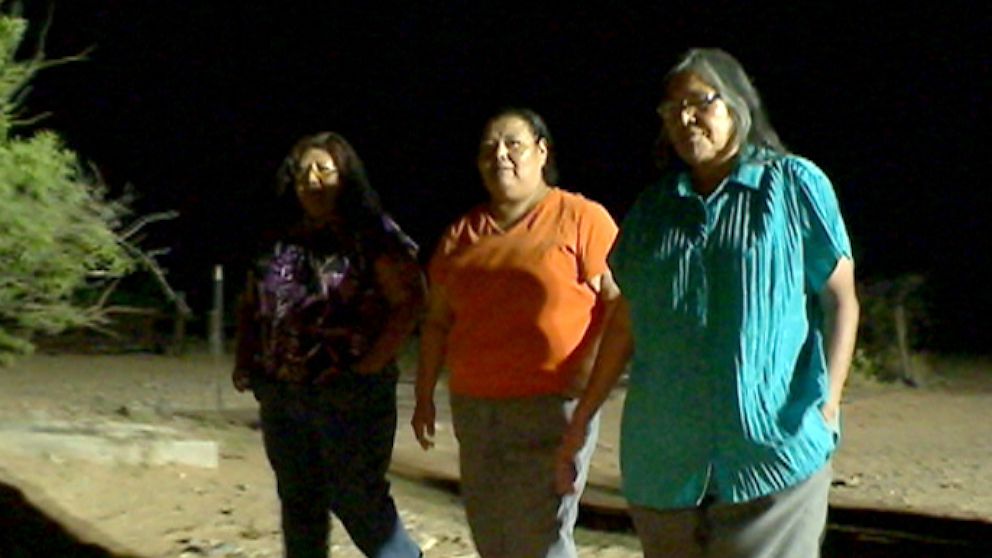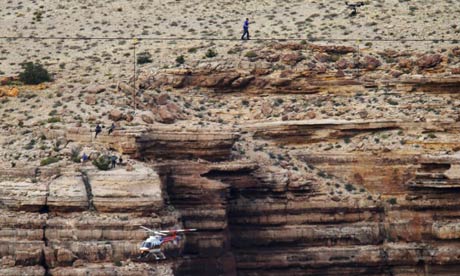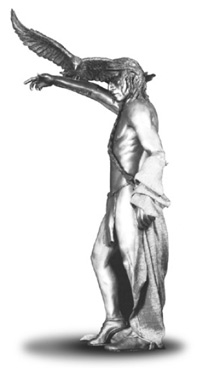As you may recall, I criticized
Sleepless Entertainment's Racist "Tribal Cosplay" in a recent posting. Perhaps foolishly, I shared the link with Sleepless's fans on their Facebook page. I got a slew of angry responses.
Here are some of their comments and my replies:
wow.... you have GOT to be one of the biggest MORONS for writing this garbage... you MUST not have much of a life ...seriouslyI earn my living writing and disseminating news about Indians. I've been invited to speak in schools and museums. My work is quoted in books and articles. If that's "not much of a life," I'll take it.
Terminology, mascots, and pollsALSO you look quite ignorant calling native americans "indian"
You keep using the word "Indian" which is almost derrogatory.I've been writing about Indians for 20-plus years, bright boys. Unless you have more experience than that, you should keep your mouths shut.
You're ignoramuses if you think Indians don't call themselves Indians. Check out the thousands of tribes and tribal organizations with the word "Indian" in their name.
Here, educate yourself on the subject so I don't have to:
"Indian" term dying out?
"American Indian" vs. "Native American"
"Indian" vs. "Native American"
Heck, check out the comments by the so-called Reservation Rats (quoted directly below). Why don't you two groups debate whether "Indian" is proper or not and get back to me with your answer?
The obsession with protesting mascots and names like Redskins is an obsession of white Indians. They protest mascots, children dressing up on Halloween and other silly things because it makes them feel Indian. It lets them scream racism.It's funny to see the Rats, who admit being a nearly defunct group of Indians, call other Indians "white." Especially since the Rats want Indians to stop protesting mascots and accept the white man's position. It's hard to be "whiter" than agreeing with the white majority.
As for the Rats' arguments, check out the hundreds of tribes and tribal organizations that have denounced Indian mascots. From my e-mail exchanges with the Rats, I've learned that's one fact they can't or won't touch.
Native orgs that oppose mascots
The pro-mascot polls are biased or misleading, as many of us have explained before. Read up on the subject rather than regurgitating what the mainstream media tells you.
Online Redskins poll demonstrates bias
AP poll on Redskinsis flawed
Annenberg's "Redskins" survey
And this posting isn't about mascots, so stick to the subject. Next time you post a bunch of irrelevant comments, I may delete them.
Fire-twirling and tiki masksIt is funny how you don't realize the disrespectful way you have presented tribal cultures aside from Native Americans.
"The fire-twirling and tiki-style mask aren't part of any American Indian culture, although they might qualify as Native Hawaiian. In any case, they're exotic customs not practiced by civilized people. Barbaric people wear strange costumes, do strange dances, and worship strange gods."Apparently you weren't clever enough to realize I was conveying Sleepless Entertainment's message, not my own. Here, I rewrote the passage so even a child couldn't misunderstand it:
Sleepless Entertainment is telling us all indigenous people are the same. The company's view is that they're barbaric people who wear strange costumes, do strange dances, and worship strange gods.
ONE WHO PERFORMS FIRE KNIFE is a Polynesian, including Samoans, Tongans, Niueans, Cook Islanders, Tahitians, Hawaiians, Marquesans and Māori, are genetically linked to indigenous peoples of parts of Southeast Asia including those of Taiwan.Which is why I wrote:
The fire-twirling and tiki-style mask aren't part of any American Indian culture, although they might qualify as Native Hawaiian.
What part of this statement do you disagree with, Angry Tahitian? In what way is it wrong to say these things
aren't Native American?
It is so easy for you to judge the mockery of Native Americas... But you are blindingly disrespecting and limiting my culture to that of the Americas... any True educated person would know very few Polynesians are Native to Hawaii.Do you know what "might"--as in "they
might qualify as Native Hawaiian"--means? It's a conditional claim, not an absolute. You can't disprove it unless you prove
no fire-twirling and tiki-style masks exist anywhere on the Hawaiian Islands.
Polynesian culture came with the Polynesians who first colonized Hawaii. If they didn't bring fire-twirling and tiki-style masks, later Hawaiians appropriated these things from their Polynesian ancestors. However these things came to Hawaii, I'm pretty sure they're part of Hawaiian culture now.
If you think I said Polynesian culture is
not part of America's melting pot, you're wrong. To reiterate, Polynesian culture isn't part of any
American Indian culture. Sleepless's tribal cosplay falsely implies it is.
Criticizing racism is racist?!The ONLY ones that are coming off racist here is you and the people who are following you and your groups that you belong to.It's almost inevitable that racists who don't like being called "racist" hurl the term back at their critics. This is stupid beyond belief, since I didn't say anything about the race of Sleepless's founders or performers.
Go ahead and tell us the definition of "racist" so we can laugh at how far off the mark you are. I'm betting you can't do it. You're crying (reverse) racist when you literally don't know what it means.
Cosplay is dressing up AS ANYTHING.So the hell what? Halloween and make-believe are "dressing up as anything" also. This doesn't inoculate people from charges of racism. The
intent is irrelevant; only the outcome matters.
Racism occurs when you dress up, imitate, and mock one particular race. Your reasons for doing so are irrelevant. People who engage in cosplay or Halloween or make-believe are all guilty of racism when they discriminate based on race...period.
The owner of Sleepless Entertainment who created this theme is actually 100% Native AmericanIs she? What's her name? What tribe is she a member of? Etc. Until you provide details, this claim is worthless.
Heck, it's worthless anyway. Native people can be guilty of stereotyping themselves--as we see with Native fans of the
Washington Redskins. Therefore, the ethnicity of the owner and everyone else at Sleepless Entertainment is irrelevant.
Posting this has made her and her family ASHAMED to share the same race as you because of how non-peaceful and racist YOU GUYS are.I'm the only person here, dummy. There are no "you guys."
And I'm not Native--as most people know, and some of the newcomers figured out. If the owner is Native, she and I are of different races.
Rob ignores other stereotypes?!?
Again, you clearly don't understand what "racist" means. You also don't understand what "non-peaceful" means. In case you haven't heard, "Names will never hurt you." Pixels on a screen
cannot harm you physically--unless you call eye strain "violence."
Nor have I advocated any kind of violence. I haven't advocated anything; I've informed you of your racist behavior. Period.
Fact is, you don't like being criticized, so you've labeled peaceful comments "non-peaceful." Well, go suck your thumb and hug your security blanket if you can't take criticism without crying. If you can't take the heat, you big babies, stay out of the kitchen.
Sleepless Entertainment are accepting of ALL PEOPLE and to say they are making a mockery of your culture.. well you might as well start protesting at EVERY elementary school.. because come thanksgiving guess what? THEY ARE ALL HAVING FAKE STORE BOUGHT INDIAN COSTUME PARTIES! OHHH MYYY GODDD AHHH!!!! And what about Football teams? If anything they should be mockering your "barbaric" ways."Mockering"? No such word.
What, you think I haven't protested
Halloween costumes,
Thanksgiving pageants, and
Indian mascots? I have whole pages devoted to these subjects, you dumb bunny.
It's hysterical how ignorant you are of my 20-plus years of work. How stupid do you have to be to spout off without knowing a thing about me? Pretty damn stupid.
FIRST OF ALL this event even says that it was not limited to ANY one native tribe. It was a collaboration of all things tribal themed... and sorry to be the barer of bad news here.. but heres a wake up call... YOUR NOT THE ONLY "TRIBAL" CULTURE THAT EXISTS!I said Sleepless Entertainment used the Native word "pow wow" and Native accouterments such as the Plains headdress. These are specific to American Indians. Stamp once if you understand this, twice if I need to explain it again.
If you didn't catch this point, learn to freakin' read. Acting as if Indians are part of some global tribal village is part of the problem. It suggests that all indigenous people are the same. You've taken thousands of distinct cultures from around the world and merged them into one.
Again, you're stereotyping Indians as primitive people of the past. And you're suggesting that "Samoans, Tongans, Niueans, Cook Islanders, Tahitians, Hawaiians, Marquesans and Māori" are equally primitive. According to Sleepless's cosplay, they're all half-naked savages.
Batting 1.000% so far...of course you weren't at the event so I wouldn't expect you to know that along with 90% of the other bullshit you made up just to make a post.So far you ignoramuses haven't found a single flaw in my arguments. If at first you don't succeed, try, try again.
You know what.. If they were to do that kind of event.. i'm sure those people would have better things to do with their lives than posting it on the internet.See comments above about how I earn my living with 20-plus years of work. And let's note your obvious avoidance technique. You can't address my arguments so you attack me instead. Pathetic.
You are a disgrace to your own kind who were once sought upon as "peace making" people, and you are just making yourself sound equally as dumb talking about something you have NO IDEA what you are even talking about.Again, I'm white. But I love the vaguely insulting phrase "your kind."
If I
were Native, other Natives wouldn't necessarily be "my kind." That's the point, dumbass. In contrast to your stereotypical cosplay, which portrays one big homogenized mess, every indigenous culture is different.
And again, you haven't identified a single problem in my posting. All your carping amounts to: "We don't like to be criticized, so stop it! Waaaah!"
Why don't you focus next on all of the Halloween costume manufactures that are making sexy Indian outfits?Why don't you click on the search terms
Halloween,
princess (as in sexy Indian Pocahotties), and
savage Indians and see how many times I've blogged about them? Then you can apologize for your profound ignorance.
I am sure the " America's 566 federally recognized tribes " Really don't give a eff. I am sure they are all living it up on Casino money and Federal Paychecks.You're sure Indians don't care about racist stereotypes? Wrong:
NMAI symposium on racist mascots
Indians testify about negative images
Legal briefs files against Redskins
I'll give you a bonus point for getting the number of federally recognized tribes right. But I have to take it away for the racist stereotypes that follow. "Living it up on Casino money and Federal Paychecks"? Thanks for demonstrating the ignorance your tribal cosplay has promoted. "Savages" like Sleepless's performers are too crude and primitive to hold jobs, so they get by with handouts.
The legal issueAs the photographer of these images i do NOT grant you the permission of using my photos for your blog. They are copy written and you don't have any rights to use them. Remove them asap.
Please give me the contact information of your lawyer, I'll have a field day.This is a good time to note Sleepless Entertainment removed its "tribal" album from public view on Facebook. What are you afraid of, chickens? If you're convinced you're right, why would you remove the album? Could it be because you finally realized how racist this performance was?
I'm already having a field day laughing at your ignorance of copyright law. But I'll tell you what. Find a lawyer who's equally ignorant of the law. Have the person write me a letter explaining why you think the fair-use exception doesn't apply. E-mail me the letter.
If it's not a complete joke, I'll forward it to one of my legal colleagues. That lawyer will explain fair use to you and your lawyer, since you clearly don't understand it. If you're not embarrassed to pieces, and still think you have a case, we'll proceed from there.
Go head, crybaby. I'm calling your bluff. Pay a lawyer to write me a letter, or shut the hell up and take my criticism like an adult.
Conclusion
With your whining about how stereotypes aren't important, "Indian" is derogatory (wrong), I'm a moron, etc., etc., none of you have actually addressed the issues. So let's do that now.
For starters, are the tribal costumes stereotypical:
yes or no? Go ahead and answer that, anonymous cowards, and then we'll discuss it.
If you can't or won't answer, get lost. Who cares if your feelings are hurt? Not me. The racism you're perpetuating is infinitely more important than your "freedom" to portray indigenous people as savages.
Finally, freedom of speech protects this posting too. If you don't like it, go cry somewhere else, you bawling brats. Your juvenile name-calling and lack of intelligent arguments are a waste of everyone's time.
For more on the subject, see
Top Three Native Stereotypes and
Mithlo's TEDx Talk on Stereotypes.








































